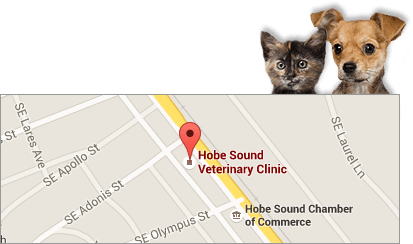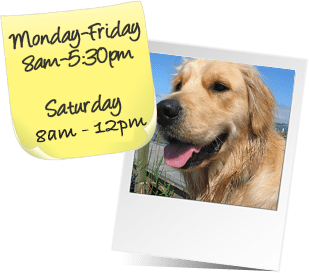Teaching dogs to talk with buttons has captured the imagination of pet owners across the country, inspiring a new way to communicate with our four-legged companions. It’s an innovative technique that taps into a dog’s capacity for recognizing associations between sounds and actions, similar to how children learn their first words. By pressing paw-friendly buttons that produce simple voice recordings, dogs can express needs, preferences, and even basic emotions. Research suggests that many dogs respond well to consistent training involving cue words, rewards, and clear reinforcement. The process demands patience, careful observation, and a commitment to consistent practice sessions that keep dogs engaged without overwhelming them. As a result, you build a unique bond that extends beyond regular commands and routines, allowing your pet to “speak” their mind. Whether they want a treat or need to go outside, these buttons can open the door to remarkable breakthroughs in interspecies communication.
Technology has certainly come a long way in recent years, and our furry friends have not been left behind. One of the most ground-breaking and interesting pet products that’s recently come out is also one of the simplest: the talking paw buttons. These are programmable pads that you can train Fido and Fluffy to step on when they want to communicate certain words. A local vet offers some tips on teaching your pet to use them in this article.
Train Vocally First
You won’t have much luck getting Fido to ask you to walk him if he doesn’t understand the meaning of the word ‘Walk’ yet. Choose words that your furry buddy is already familiar with, and get them used to those phrases. Popular options for dogs include things like Treat, Outside, Toy, and Play. Kitties may demand things like food or playtime. (Fluffy may also request complete world domination, but that’s another topic.) Be consistent: don’t say Walk one day and Potty the next.
Consider A Board
You may find it easier to organize your pet’s button using a foam board. This is also helpful in that it allows you to group words in a manner of your choosing. Some manufacturers offer boards, but you can also make them from foam tiles or even cardboard.
Choose Words With A Positive Association
Only use words your pet associates with things they like. ‘Treat’ or ‘Playtime’ are good options. For Fido, you can also start by teaching him to associate a button with going for a walk. Start by putting a button in a spot where he’ll have to pass it to get outside. You may want to choose the word ‘Walk’ or ‘Outside’ to program. Every time you take him out, press the button so your pup hears the word. For a cat, you may want to try incorporating a ‘Dinner’ button just before meals.
Getting The Hang Of It
When teaching dogs to talk with buttons, consistency is your best tool. As you maintain regular training sessions, your dog will gradually learn to link each button with its specific action or object. Sooner or later, they may try pushing the button himself. When he does, immediately provide the associated response. For instance, if Fido pushes the ‘Outside’ button, take him outside.
Keep It Up
Once your pet has the basics down, you can add more buttons and start incorporating combinations. Some of our animal companions become amazingly concise at communicating with their humans! It’s fascinating to imagine how pets might communicate if they had even more dexterity. For a humorous take on this topic, check out our article If Pets Had Thumbs. While it’s a fun thought experiment, talking paw buttons offer a real way for our pets to express themselves more clearly.
Teaching Dogs to Talk with Buttons: 2025 Guide & Specifications
What are the technical specifications to look for in button devices?
Button devices used for pet communication training should feature a sturdy construction that accommodates repeated pressing. Look for customizable recording options with clear, high-quality sound, so the words are easily recognized. Controls for volume adjustment help in various environments. Waterproof or spill-resistant materials keep the device safe from saliva or water splashes, while slip-resistant bases ensure stability. A reliable power source is vital, whether rechargeable or easily replaced batteries. Boards or foam tiles can streamline organization and placement. Selecting bright, visible colors also helps pets distinguish each button more easily.
What are the different stages of button learning?
Button learning generally starts with verbal understanding of a specific word, reinforced through consistent usage in daily routines. Once the pet associates that word with a positive outcome, a corresponding button is introduced in a place where stepping on it is convenient. Repeated demonstrations and immediate responses help the pet grasp cause and effect. Eventually, the pet will press the button independently, expecting the same reward or action. This process can then be replicated with additional words, allowing the pet to build a broader ‘vocabulary’ and communicate more complex requests over time.
What should you do if your pet uses buttons inappropriately?
If an animal is misusing the talking paw buttons, calmly and consistently redirect them by ignoring button presses that have no meaningful context or appear purely attention-seeking. This helps the pet distinguish between legitimate communication attempts and random usage. It’s also helpful to reinforce correct button usage by quickly responding whenever the pet presses a button in an appropriate setting. Gradually introduce a schedule that restricts the pet’s access to the buttons, if necessary, to minimize confusion. Proper, prompt responses guide the animal in understanding which behaviors yield positive outcomes and which do not.
What do you do if your pet stops using the buttons suddenly?
Sudden disinterest in the button system can be triggered by various factors, including stress, lack of consistent reinforcement, or changes in routine. Start by verifying the device is functioning properly, with clear volume and working batteries. Reintroduce the button during positive interactions or fun activities. Confirm that each press receives an immediate and engaging response. If the animal remains unresponsive, consider potential medical or emotional issues that might impact its motivation. Schedule a checkup to rule out health concerns, while maintaining consistent, encouraging training sessions to restore interest in communication through buttons.
What should you do if your pet becomes overly enthusiastic or aggressive with the buttons?
Overly enthusiastic or aggressive behavior during button usage can be addressed by controlling the environment. If a pet is jumping on or striking the buttons too forcefully, reposition the device away from high-traffic areas and try short training intervals. Provide consistent reinforcement for calm button interactions and ignore or redirect excessive pawing or biting attempts. For instance, use a verbal correction or gently remove the pet from the button area until they settle. Additionally, confirm that the pet’s energy requirements are being met through regular exercise, mental stimulation, and a balanced feeding schedule.
Do you have questions about your pet’s behavior? Contact us, your local pet hospital in Hobe Sound, FL, today! We’re here to help with all aspects of your pet’s care, from behavioral advice to health checkups. And if you’re planning a trip, don’t forget to ask about our pet boarding services. We can ensure your furry friend is well cared for, even when you’re away, allowing them to continue their communication training without interruption.





